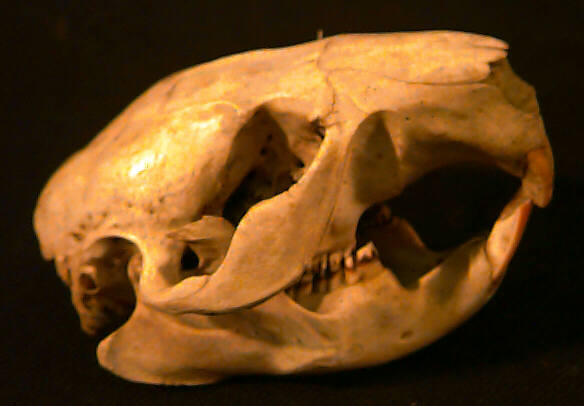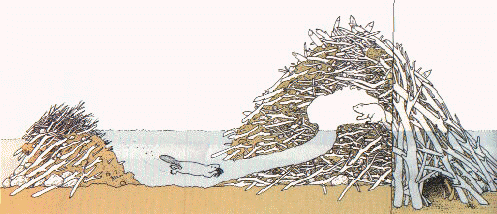
|
European Beaver, Castor fiber Suborder Sciurognathi The beaver is one of the best adapted rodents for movement in water. It is torpedo shaped with waterproof fur and gains thrust from its flattened tail and webbed feet. The tail also provides steering. When diving, the ears and nose close tight and a translucent membrane covers the eyes. The throat can be blocked by the back of the tongue and the lips can close behind the incisors so it can gnaw underwater without choking.
Beavers build dams using mud, stones and wood across streams to create ponds which make their lodges more secure from predators, their environment more stable and allow efficient use of food resources. Diet varies with season, beavers feeding non-woody plants in spring and summer, and shrubs and trees in autumn. Food is gathered in the autumn and stored underwater, near the lodge, for the winter. The cold water preserves the nutritional value of the stems.
Kits (young beavers) are born in the lodge in the late spring. At birth they are fully furred, their eyes open and can swim within a few hours. Young beavers suffer from acute constipation unless there is water in which they can defecate. |









